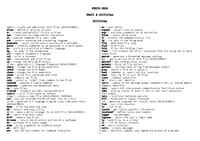
Photo from wikipedia
IntroductionHealth-related quality-of-life (HRQoL) measures are commonly mapped to a value that represents a utility for economic evaluation via regression models, which may lead to shrinkage of the variance.ObjectivesThis study aimed… Click to show full abstract
IntroductionHealth-related quality-of-life (HRQoL) measures are commonly mapped to a value that represents a utility for economic evaluation via regression models, which may lead to shrinkage of the variance.ObjectivesThis study aimed to develop and compare conversion functions that map the Functional Assessment of Cancer Therapy—Breast (FACT-B) total score to the EuroQoL 5-Dimensions, 5-Levels (EQ-5D-5L) utility value via four methods.MethodsWe used the HRQoL scores of 238 Singapore patients with breast cancer to develop the conversion function for the equipercentile, linear equating, mean rank and ordinary least squares (OLS) methods. We compared the distributions of the observed values and the four sets of mapped values and performed regression analyses to assess whether the association with risk factors was preserved by utility values derived from mapping.ResultsAt baseline, the observed EQ-5D-5L utility value had a mean ± standard deviation (SD) of 0.820 ± 0.152, and 24.8% of the respondents attained a value of 1. The OLS method (mean 0.820; SD 0.112; proportion 0%) better agreed with the observed data than the equipercentile (mean 0.831; SD 0.152; proportion 23.5%), linear equating (mean 0.814; SD 0.145; proportion 11.8%) and mean rank method (mean 0.821; SD 0.147; proportion 23.9%). The significance of association was preserved for all parameters involved in the regression analyses by the equipercentile and linear equating methods, but the mean rank and OLS methods were inconsistent with the observed data for one and two parameters, respectively.ConclusionThe problem of shrinkage in the variance occurred in the OLS method, but it provided an unbiased estimate for the mean and better agreement. Among the other three linking methods, the mean rank method better described the distribution, whereas the equipercentile and linear equating methods better assessed the association with risk factors.
Journal Title: Applied Health Economics and Health Policy
Year Published: 2018
Link to full text (if available)
Share on Social Media: Sign Up to like & get
recommendations!